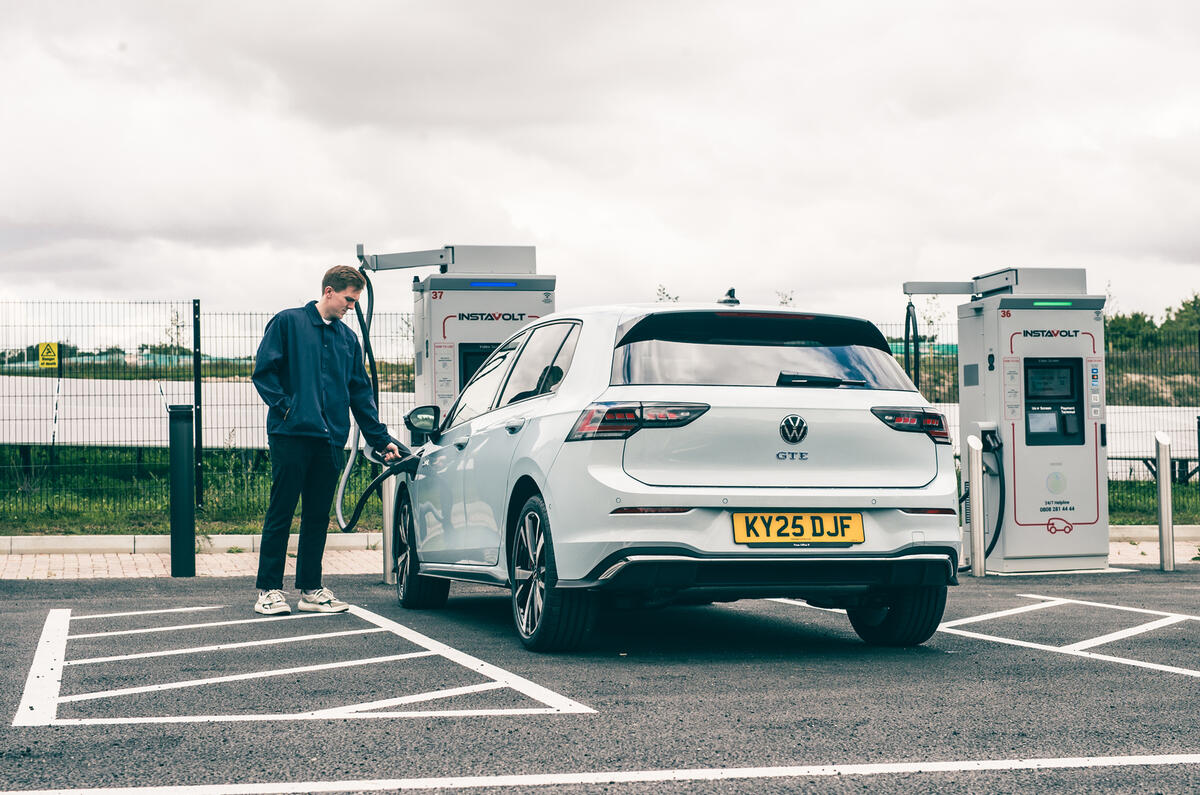After more than a decade on sale in the UK, plug-in hybrids (PHEVs) are having their moment in the spotlight.
As a halfway house to electric cars, the latest PHEVs combine up to 80 miles of battery-powered driving with the ease of filling with fuel for longer trips, and their low CO2 emissions mean they’re tax-efficient company cars too.
New PHEVs outnumber diesel cars almost two to one, and more than 80% of them are sold to fleets.
However, behind attention-grabbing efficiency figures, PHEV running costs are almost infinitely variable, depending on how and where they’re driven, and when, where and if they are plugged in. Here’s how to keep your costs down.
1. Get a home charger
Although PHEVs don’t rely on a home charger, it’s the easiest step to slashing your fuel bills.
For example, the Volkswagen Tiguan eHybrid Match has EV-mode efficiency of 4.4 miles per kWh.
That’s around 6p per electric mile if it’s charged at home, or half the cost of using a public charger, according to Zapmap’s latest figures.
Leasing firms often let drivers bundle a home charger into their company car order, while generous employers can cover that additional cost without you being taxed for it.
Costs aside, a proper wallbox is easier than trailing cables out of windows or planning public charging sessions into your week.
2. Switch to an off-peak tariff
Ignoring the handful of free public chargers, there’s no cheaper source of electricity than a home tariff with off-peak pricing.
Wholesale energy costs fluctuate based on demand, and several utility companies will pass this on as discounted rates when there’s less load on the grid. That’s typically between midnight and 6am.
Continuing the example above, the Tiguan would cost 2p per mile in EV mode if it’s charged overnight on tariffs such as those offered by E.ON and Octopus – and that’s often when electricity is generated from the greenest sources too.
Most PHEVs and all new wallboxes can be programmed to defer charging sessions until a specific time.
3. Pre-warm the cabin
Batteries don’t like winter weather. A cold snap slows the chemical reactions in the battery and means using energy-intensive heaters to warm the cabin – both of which blunt efficiency and shorten your range. In a PHEV, this means the engine will cut in earlier in a journey, which is pricier than driving on electricity.
Like electric cars, most PHEVs have a pre-conditioning feature that automatically warms the cabin, demists the windows and brings the battery up to its most efficient operating temperature ready for a pre-set departure time.
If it’s still plugged in, it will be drawing that energy from the mains instead of depleting its electric range.
4. Be gentle
Most cars respond well to smooth driving, but hybrids (including PHEVs) are especially sensitive to a heavy right foot.
Hybrids can coast for short distances with the engine off if they’re not working too hard, even if battery is depleted, and that’s great for motorway efficiency. However, they will also lean on the engine while accelerating or on steep inclines, as that’s what produces most of the power.
Be gentle with the throttle, look ahead and slow down early to use the regenerative braking instead of the friction brakes. That way, you will get more range from your battery and the hybrid system can make better use of its two power sources – both of which will save fuel.
5. Be selective with public charging
It isn’t always cheaper to drive a PHEV on battery power. Public charging costs vary, but Zapmap claims an average fee of 51p per kWh at ‘slow’ AC chargers – the type you find at supermarkets, shopping centres and hotels. That’s 12p per mile for our example Tiguan, which is equivalent to around 50mpg in fuel costs.
Rapid chargers are even pricier, at 76p per kWh or 17p per mile for the same Tiguan. So at anything over 34mpg, it’s cheaper to just leave the car in hybrid mode.
That margins are so narrow that it’s worth being selective. Zapmap can highlight free-to-use chargers, while A Better Route Planner can plan journeys using specific (cheaper) networks.
If you will regularly be using public networks, it’s also worth considering signing up to Bonnet, which offers a 10-15% discount for a monthly membership fee.
6. Let the car do the work
If you’re new to PHEVs, the choice of modes for saving, storing and using the energy in the battery can seem baffling at first. But several manufacturers – including Audi, Mercedes-Benz, Toyota and Volvo – have clever technology that does the hard work for you.
Tap your destination into the built-in sat-nav system and the car will intelligently meter out the energy in the battery to suit different traffic conditions, topography and low-emission zones. Instead of draining the battery at the start of the trip, it will reserve some energy for electric urban driving or to give the engine a helping hand on steep inclines. And by using the right technology for the conditions, it can save you money too.






Join the debate
Add your comment
Be careful of a lease more than 24 months. PHEVs move up to 18% BIK in April 2028. So, it really is a moment.